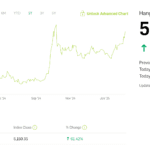The U.S. Bureau of Labor Statistics released its January 2025 employment report, revealing that the economy added 143,000 jobs, falling short of the anticipated 169,000. Despite this, the unemployment rate decreased to 4% from the previous month’s 4.1%.
- Job Growth: The addition of 143,000 jobs in January indicates a slowdown compared to previous months. Factors such as adverse weather conditions, including wildfires in California and cold spells across the country, contributed to this deceleration.
- Unemployment Rate: The decline to 4% suggests a tightening labour market, which could affect wage growth and inflation.
- Wage Growth: Average hourly earnings increased by 0.5% to $35.87 in January, totaling a 4.8% rise over the past year. This uptick in wages may signal potential inflationary pressures.
Implications for the Stock Market:
The stock market’s reaction to employment reports is multifaceted, influenced by factors such as job growth, wage trends, and implications for Federal Reserve policy.
- Investor Sentiment: The mixed nature of the January report led to a subdued market response. The S&P 500 edged up by 0.1%, the Dow Jones Industrial Average dipped slightly, and the Nasdaq Composite rose by 0.3%.
- Interest Rate Expectations: The combination of moderate job growth and rising wages may prompt the Federal Reserve to maintain its current interest rate stance. Economists suggest that the Fed is likely to remain cautious, awaiting more data before making policy adjustments.
- Sectoral Impacts: Industries such as healthcare and retail experienced job gains, while sectors like mining and oil and gas extraction saw declines. These sector-specific trends can influence investor decisions, as growth in certain industries may present opportunities, while contractions in others could signal caution.
The January 2025 employment report presents a nuanced picture of the U.S. labor market. While job growth has slowed, the decrease in the unemployment rate and rising wages indicate underlying strength. For investors, these mixed signals underscore the importance of monitoring economic indicators and Federal Reserve communications to inform investment strategies.










